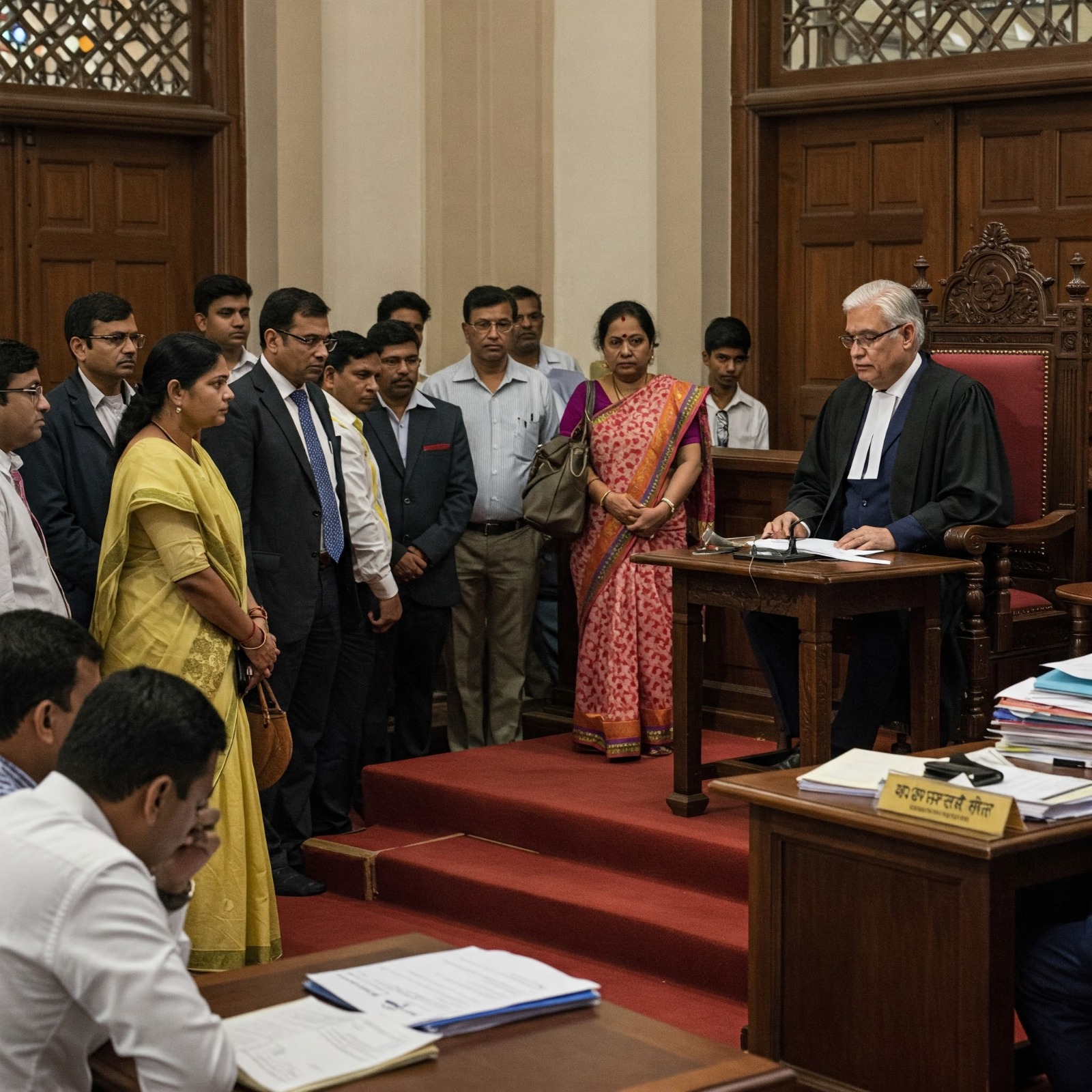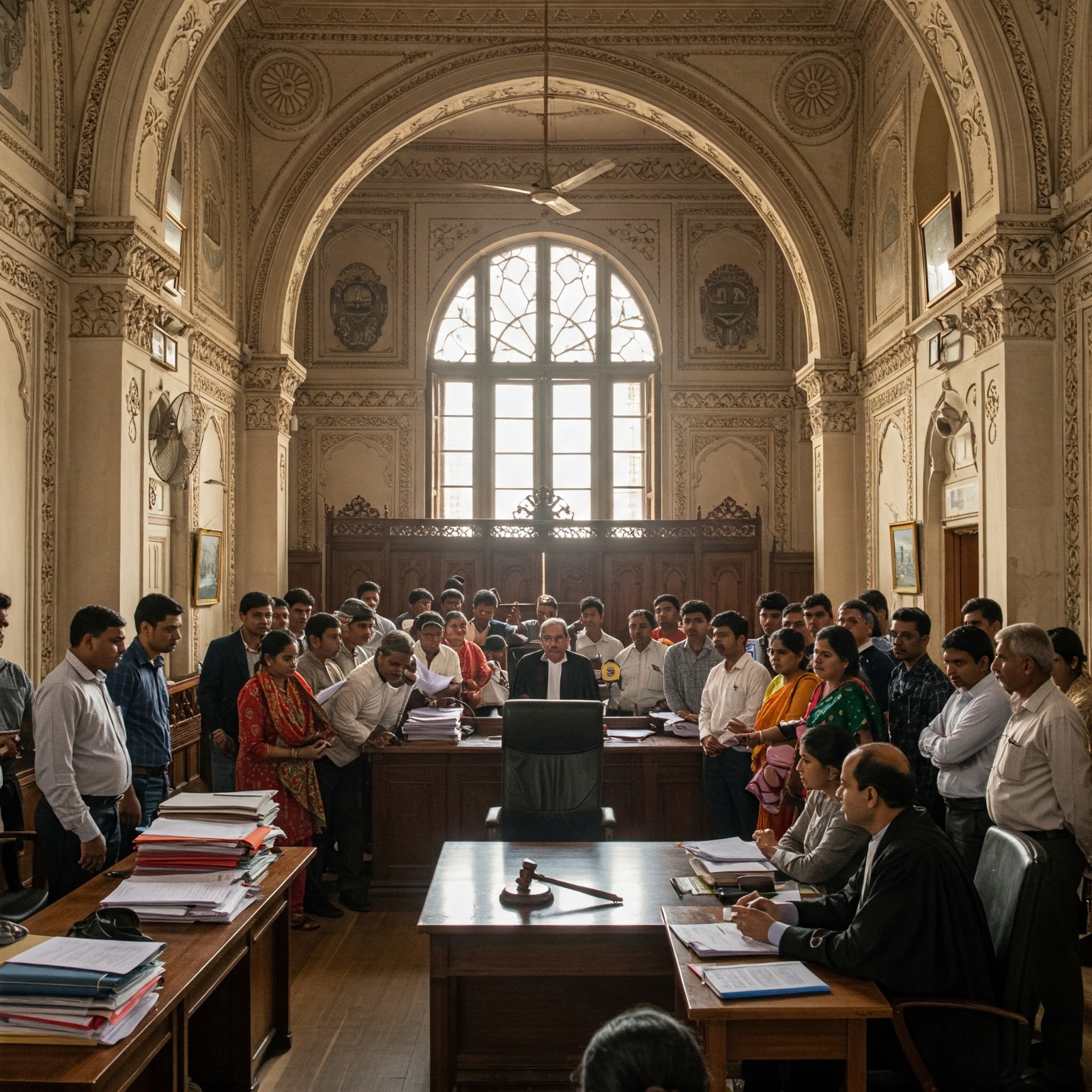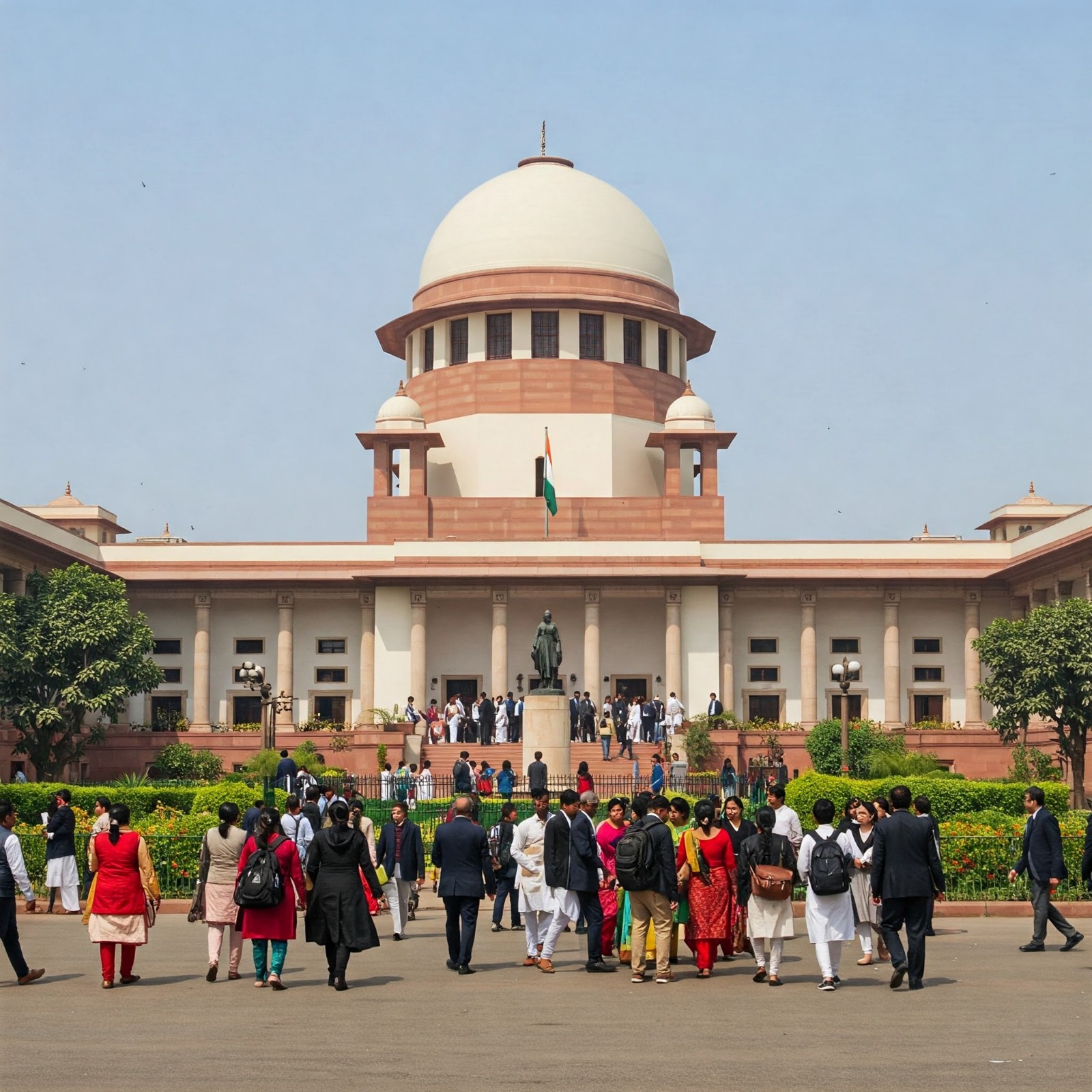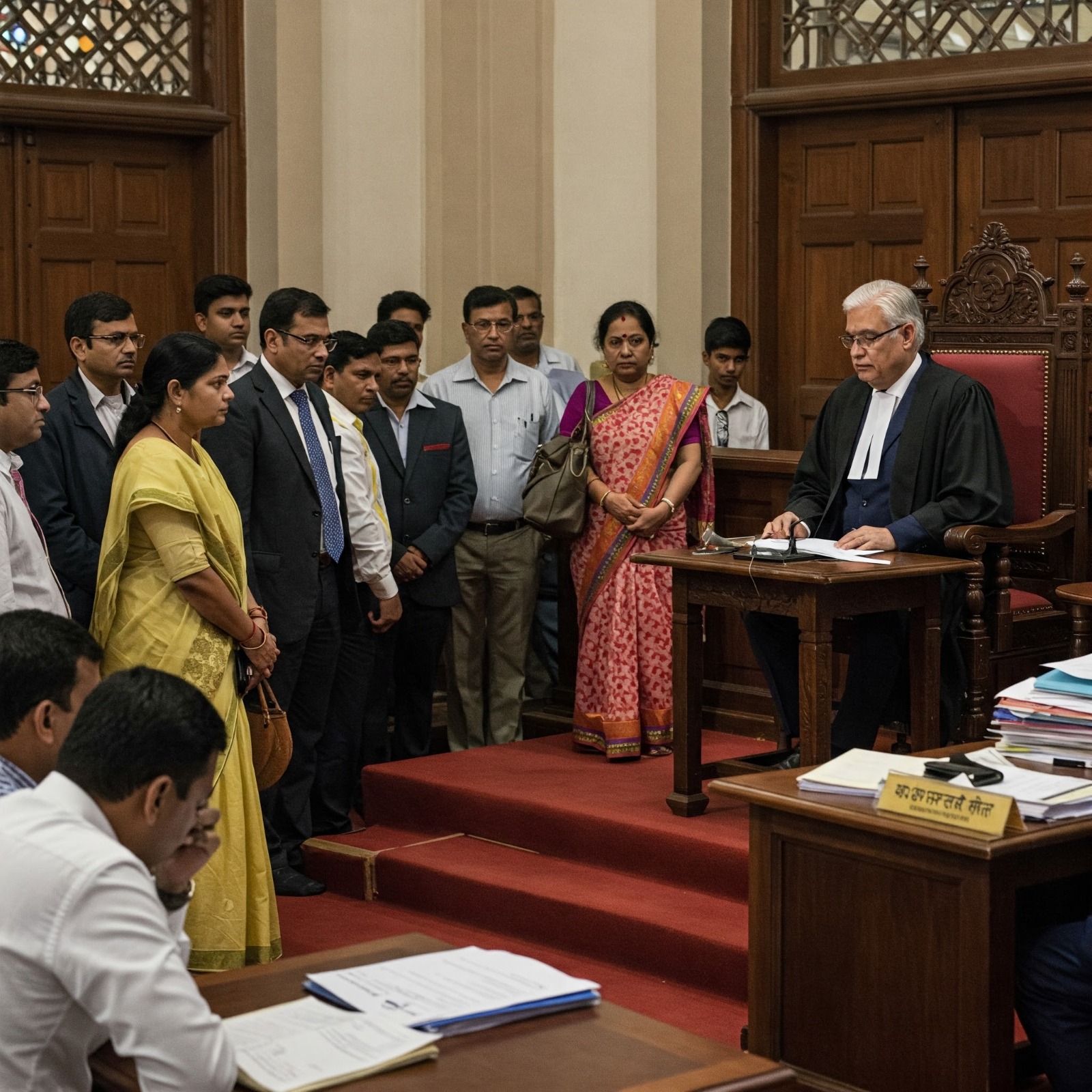INDRA SAWHNEY V UNION OF INDIA AIR 1993 SC 477


DATE: 16/11/1922
COURT: SUPREME COURT OF INDIA
BENCH: Justice M.H. Kania, Justice M.N. Venkatachaliah, Justice S. Ratnavel Pandian, Justice Dr. T.K. Thommen, Justice A.M. Ahmadi, Justice Kuldip Singh, Justice P.B. Sawant, Justice R.M. Sahai and Justice B.J. Reddy
BACKGROUND:
The case of Indra Sawhney v. Union of India (1992 AIR 477; 1992 SCR (3) 217) arose in the context of India’s deeply entrenched caste-based reservation policies. The primary dispute concerned the constitutional validity of the reservation system, particularly in public employment, and whether the extent of reservations could breach the 50% limit. The case was triggered by the implementation of the recommendations made by the Mandal Commission, officially known as the Second Backward Classes Commission, which was established in 1979 under B.P. Mandal. The Commission was tasked with identifying socially and educationally backward classes (SEBCs) and suggesting measures for their advancement. In its report, submitted in 1980, the Commission recommended 27% reservation for SEBCs in central government jobs and public sector undertakings. However, the recommendations remained unimplemented for nearly a decade due to political and social resistance.
In 1990, the then Prime Minister V.P. Singh announced the implementation of the Mandal Commission's recommendations, granting 27% reservation for SEBCs in public employment. This decision led to widespread protests across the country, with agitations by students and civil society groups, claiming that the move was discriminatory and would undermine meritocracy. The reservation policy also sparked significant public outcry, including incidents of violence and self-immolation by protesting students. The decision was challenged before the Supreme Court by Indra Sawhney, a journalist, along with several others, arguing that the reservation policy was unconstitutional and violated the principles of equality enshrined under Articles 14, 15, and 16 of the Indian Constitution.
The case also brought into focus the creamy layer concept, which was aimed at excluding the relatively affluent and advanced sections of backward classes from availing reservation benefits. Additionally, the case addressed whether economic criteria alone could form the basis for reservation and whether reservation could be extended to promotions in public employment. The case became a constitutional landmark, as it involved the interpretation of the scope and limitations of Article 16(4), which allows for reservations in public employment, and the extent of judicial review over reservation policies. The Supreme Court’s verdict, delivered by a nine-judge bench, significantly shaped the framework of affirmative action in India by establishing important guidelines and limitations on reservation policies.
FACTS:
The case emerged against the backdrop of India’s longstanding caste-based reservation policies, which aimed at addressing historical social inequalities. The immediate trigger for the case was the implementation of the Mandal Commission’s recommendations by the central government. The Mandal Commission, officially known as the Second Backward Classes Commission, was constituted in 1979 by the Janata Party government under Prime Minister Morarji Desai, with B.P. Mandal as its chairperson. Its objective was to identify socially and educationally backward classes (SEBCs) and recommend measures for their socio-economic upliftment. After extensive research, the Commission submitted its report in 1980, identifying 3743 castes as backward, representing nearly 52% of the population. It recommended 27% reservation for SEBCs in public sector jobs, in addition to the 22.5% reservation already in place for Scheduled Castes (SCs) and Scheduled Tribes (STs). However, the report remained shelved for nearly a decade due to political inertia and social resistance.
The situation changed in 1990 when the V.P. Singh government decided to implement the Mandal Commission's recommendations by granting 27% reservation in central government jobs for SEBCs. This decision led to widespread protests and social unrest across the country. Student groups and civil society organizations staged violent demonstrations, arguing that the move promoted caste-based discrimination, undermined meritocracy, and fostered further social division. The protests were marked by incidents of self-immolation and mass demonstrations, reflecting the deep public discontent over the policy. On the other hand, supporters of the reservation policy argued that it was necessary to correct centuries of social injustice and promote affirmative action for backward classes.
In response to the government’s decision, Indra Sawhney, a journalist, along with other petitioners, filed a writ petition in the Supreme Court, challenging the constitutional validity of the 27% reservation for SEBCs. The petitioners contended that the reservation policy violated the principles of equality and meritocracy enshrined in Articles 14, 15, and 16 of the Indian Constitution. They argued that the government's order was arbitrary, lacked proper criteria for identifying backwardness, and breached the 50% ceiling on reservations previously established by the Court. Furthermore, the petitioners raised concerns regarding the "creamy layer" exclusion, claiming that economically advanced individuals within backward classes were unfairly benefitting from the policy.
The government, in its defense, justified the reservation policy as a legitimate form of positive discrimination aimed at uplifting historically marginalized communities. It argued that Article 16(4) empowered the state to make provisions for backward classes in public employment and that the 27% quota was based on extensive socio-economic data compiled by the Mandal Commission. The government further contended that the "creamy layer" concept was irrelevant, as the reservation was based on social and educational backwardness rather than economic criteria. The judicial procedural history of the case began with multiple writ petitions being filed in various high courts challenging the Mandal Commission's recommendations. These petitions were eventually consolidated and transferred to the Supreme Court, which constituted a nine-judge bench to hear the matter, given its constitutional significance.
ISSUES:
Is the reservation policy based on caste constitutionally valid or violating Article 16 of the Constitution of India?
Should reservations be determined by quantifiable data on social and educational backwardness?
What should be the maximum limit or cap on total reservations in government jobs and educational institutions?
Should the “creamy layer” within reserved categories be excluded from availing reservations?
LEGAL PROVISIONS:
Article 14 – Right to Equality
Article 15(1) – Prohibition of Discrimination on Grounds of Religion, Race, Caste, Sex, or Place of Birth
Article 15(4) – Special Provisions for the Advancement of Socially and Educationally Backward Classes
Article 16(1) – Equality of Opportunity in Public Employment
Article 16(4) – Reservation in Public Employment for Backward Classes
Article 16(4A) – Reservation in Promotions for SCs and STs (introduced later by the 77th Amendment Act, 1995 in response to this case)
Article 32 – Right to Constitutional Remedies (under which the petition was filed)
Article 335 – Claims of SCs and STs in Services and Posts
Directive Principles of State Policy (Part IV) – Particularly Articles 38 and 46, which promote social justice and the upliftment of weaker sections.
CASES CITED:
State of Madras v. Champakam Dorairajan, AIR 1951 SC 226
M.R. Balaji v. State of Mysore, AIR 1963 SC 649
State of Kerala v. N.M. Thomas, AIR 1976 SC 490
K.C. Vasanth Kumar v. State of Karnataka, AIR 1985 SC 1495
T. Devadasan v. Union of India, AIR 1964 SC 179
Akhil Bharatiya Soshit Karamchari Sangh v. Union of India, AIR 1981 SC 298
General Manager, Southern Railway v. Rangachari, AIR 1962 SC 36
Janki Prasad Parimoo v. State of J&K, AIR 1973 SC 930
Triloki Nath v. J&K State, AIR 1967 SC 1283
M.G. Badappanavar v. State of Karnataka, AIR 2001 SC 260
S. Vinod Kumar v. Union of India, AIR 1996 SC 2986
Ashok Kumar Thakur v. Union of India, AIR 2008 SC 2896
Nagraj v. Union of India, AIR 2006 SC 71
R.K. Sabharwal v. State of Punjab, AIR 1995 SC 1371
Vasant Kumar v. State of Karnataka, AIR 1985 SC 1495
JUDGEMENT WITH REASONING:
In its landmark verdict delivered on November 16, 1992, the Supreme Court upheld the constitutional validity of the 27% reservation for Socially and Educationally Backward Classes (SEBCs) in public employment as recommended by the Mandal Commission. However, the Court introduced certain restrictions and guidelines to prevent the misuse of the reservation policy. It ruled that the total reservation quota could not exceed 50%, establishing this as a constitutional ceiling to preserve the principle of equality. The Court also introduced the “creamy layer” exclusion, holding that economically advanced individuals within backward classes should be excluded from availing reservation benefits. Furthermore, the Court declared that reservation in promotions was unconstitutional, stating that Article 16(4) does not extend to promotions. The ruling significantly shaped India’s reservation policy by balancing affirmative action with the principle of equality.
The Court’s reasoning in Indra Sawhney was based on a detailed interpretation of Articles 14, 15, and 16 of the Constitution, along with the principles of substantive equality and social justice. The Court held that the reservation policy was a legitimate form of positive discrimination aimed at uplifting historically marginalized groups. It reasoned that treating unequals equally would perpetuate inequality, and therefore, special provisions were necessary to promote substantive equality. The 27% reservation for SEBCs was deemed valid, as it was based on a comprehensive socio-economic survey conducted by the Mandal Commission, which established the backwardness and underrepresentation of these classes in public employment.
However, the Court emphasized the need to balance reservation with meritocracy, which led to the introduction of the 50% ceiling on reservations. It reasoned that exceeding this limit would violate Article 14 by creating unfair advantages and undermining the principle of equality of opportunity. The Court clarified that while reservation policies promote social justice, they should not compromise the overall efficiency and functioning of public administration.
A significant aspect of the judgement was the introduction of the creamy layer concept, aimed at preventing economically advanced individuals within backward classes from cornering the benefits meant for the genuinely disadvantaged. The Court reasoned that reservation should not become a tool for perpetuating privilege among the well-off sections of backward classes. Thus, the creamy layer exclusion was necessary to ensure that the benefits reached the truly disadvantaged sections.
The Court also ruled against reservations in promotions, reasoning that Article 16(4) was intended only for initial appointments and not for promotions. It held that extending reservations to promotions would disrupt the principle of merit-based advancement and create inefficiencies in public administration. The concept of seniority and efficiency in service needed to be preserved, making it impermissible to extend reservation benefits beyond the stage of recruitment. Overall, the Court's reasoning reflected a delicate balance between social justice and meritocracy, ensuring that reservation policies served their intended purpose without compromising administrative efficiency and equality of opportunity.
CRITICISMS:
The judgement in Indra Sawhney v. Union of India received significant criticism on various grounds, particularly concerning its perceived impact on meritocracy, administrative efficiency, and the fairness of the reservation policy. One of the primary criticisms was that the decision to uphold 27% reservation for SEBCs, even with the 50% ceiling, was seen as excessive and discriminatory towards the general category candidates. Critics argued that the artificial ceiling failed to account for regional and local disparities in backwardness, making the uniform limit arbitrary. Furthermore, opponents contended that the introduction of the creamy layer concept, while intended to prevent misuse of reservations, was inadequately defined and inconsistently applied, creating ambiguity and administrative hurdles. There were also concerns that the exclusion of creamy layer did not effectively curb the benefits being cornered by relatively privileged sections of backward classes, as the criteria for exclusion were based on economic parameters rather than social backwardness.
Another major criticism was the Court’s ruling against reservations in promotions, which was viewed as a setback for the advancement of backward classes. Many argued that excluding reservations in promotions defeated the purpose of affirmative action, as backward class employees could face stagnation in their career growth due to lack of reservation at higher levels. The verdict was also criticized for creating a complex and rigid framework, making the reservation policy prone to judicial intervention and frequent legal challenges. Critics pointed out that the judgement failed to adequately address the inadequacy of empirical data used by the Mandal Commission, which relied on outdated and incomplete statistics. The Court’s reliance on this report, despite its flaws, was viewed as legally unsound.
Moreover, the judgement was seen as politically influenced, as it came in the wake of the Mandal Commission protests, which had deeply polarized the nation. Many believed that the ruling, while legally sound, was driven by the need to pacify public unrest rather than being based on a purely constitutional interpretation. Lastly, the verdict was criticized for failing to provide a long-term solution to the issue of reservations, as it neither proposed regular reviews of backward class status nor introduced mechanisms to ensure that reservations did not become permanent entitlements. This led to concerns that the judgement, while establishing important legal principles, ultimately failed to prevent caste-based divisions and the politicization of reservation policies.
ANALYSIS:
The Indra Sawhney judgement is widely regarded as a defining moment in the constitutional history of India, as it laid down comprehensive principles governing affirmative action and reservations. The Supreme Court’s decision to uphold the 27% reservation for Socially and Educationally Backward Classes (SEBCs) reaffirmed the state's commitment to social justice. The Court recognized that caste, though a socially undesirable classification, was a reliable indicator of backwardness in Indian society. By validating caste-based reservation, the Court acknowledged the deep-rooted historical inequalities and the necessity of targeted affirmative action to ensure equal access to opportunities. However, in introducing the 50% ceiling on total reservations, the Court struck a delicate balance between social justice and meritocracy, preventing the over-expansion of reservations and safeguarding the right to equality of unreserved candidates.
One of the most significant contributions of the judgement was the introduction of the creamy layer concept, which aimed to prevent economically privileged individuals within backward classes from unfairly benefiting from reservations. This distinction ensured that only the genuinely disadvantaged sections received reservation benefits, thereby preventing the policy from becoming a tool of perpetual privilege for certain groups. By doing so, the Court introduced an economic criterion as a limiting factor, even though reservation itself was based on social and educational backwardness. This approach sought to fine-tune the reservation policy, making it more equitable and targeted.
However, the Court's decision to exclude reservations in promotions was a controversial aspect of the ruling. The Court interpreted Article 16(4) narrowly, holding that reservations were only applicable to initial appointments and not promotions. This part of the decision was intended to preserve meritocracy and ensure administrative efficiency. However, it was met with strong criticism from affirmative action advocates, who argued that without reservation in promotions, backward classes would remain stagnant in lower-level positions, thereby defeating the purpose of upward mobility.
The Court's emphasis on judicial oversight and the requirement for quantifiable data to justify reservations established a strong precedent for reviewing government policies. It clarified that reservation cannot be arbitrary and must be backed by empirical evidence of backwardness and underrepresentation. This laid the foundation for subsequent judicial scrutiny of reservation policies and ensured that reservations would not be granted in an unfettered or politically motivated manner.
Overall, the Indra Sawhney judgement was a landmark ruling that established the legal framework for affirmative action in India. It struck a pragmatic balance between protecting the rights of backward classes and safeguarding meritocracy. By introducing the 50% cap, creamy layer exclusion, and disallowing reservation in promotions, the Court aimed to curtail the misuse of reservation policies while ensuring that genuinely disadvantaged groups received the intended benefits. Despite its progressive elements, the decision left certain ambiguities, particularly regarding the implementation of the creamy layer and the empirical identification of backwardness, which continue to fuel legal and political debates around reservations in India.
Our culture nurtures and strives to achieve innovation, creativity, legal expertise and is client focused. Daily, we enhance our entrepreneurial environment




